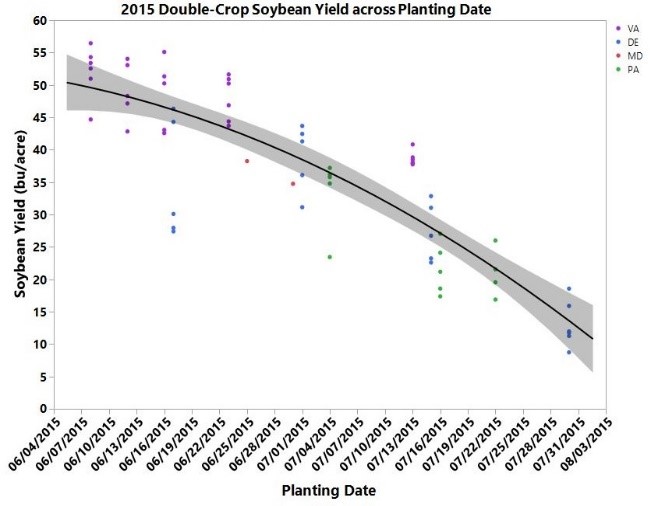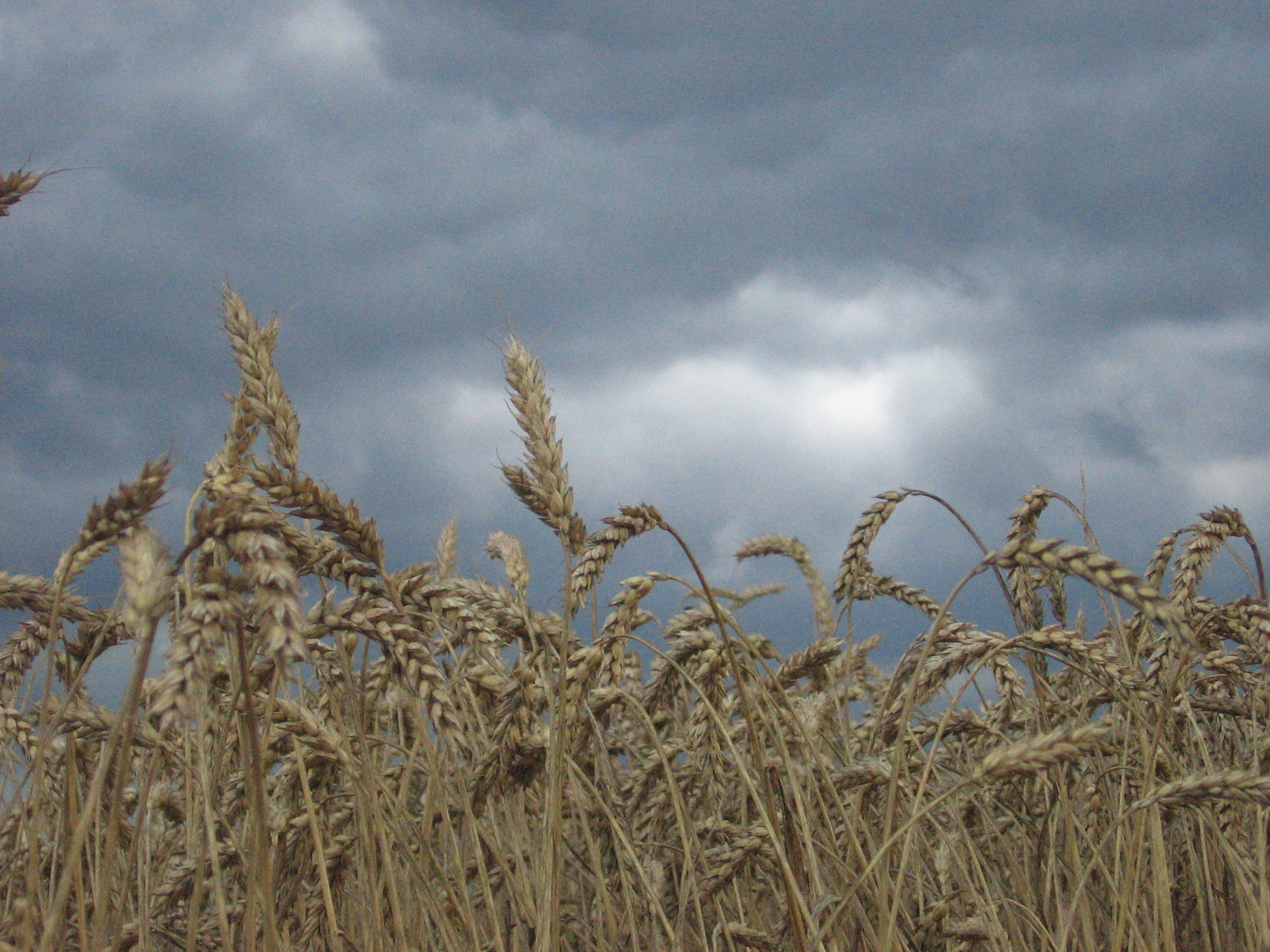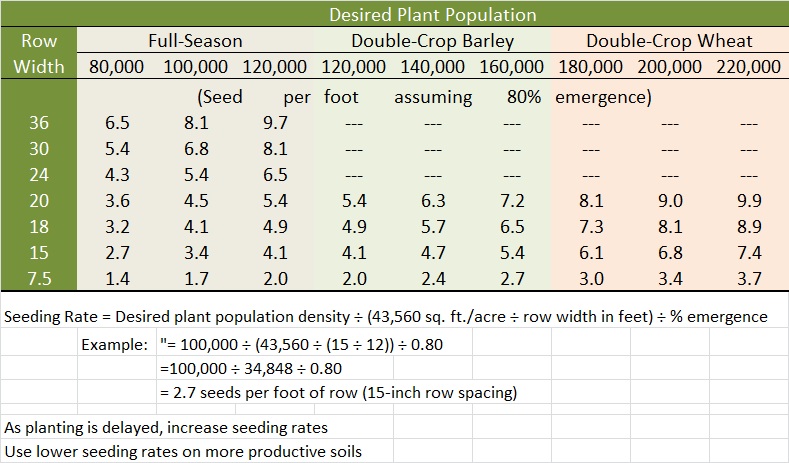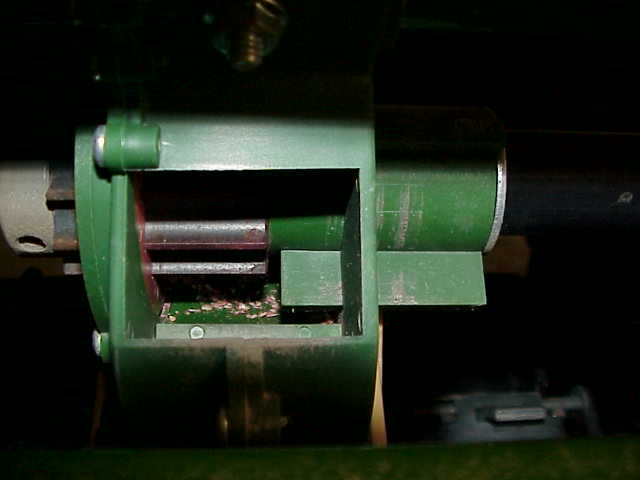It’s hard to believe, but June is here and we need to start thinking about increasing our soybean seeding rates. I’ve been recommending only 100 to 115 thousand seeds per acre for full-season production, enough to give you 70 to 80 thousand plants – yes, that’s all you need to maximize yield.
But as the season gets shorter, yields will start falling with delays in planting date. On average, we lose about 1/2 bushel/acre per every day we delay planting after the middle of June. The graph below shows the results of last year’s 4-state early wheat harvest/soybean planting double-crop study. Note that yield does not decline very much during the first week or two of June, but rapidly drops off afterwards.
 The main reason for this yield decline is that the crop struggles to develop enough leaf area to capture 90-95% of the sunlight by early pod development, due to the shorter growing season. We can alleviate some of this by narrowing rows and increasing seeding rate.
The main reason for this yield decline is that the crop struggles to develop enough leaf area to capture 90-95% of the sunlight by early pod development, due to the shorter growing season. We can alleviate some of this by narrowing rows and increasing seeding rate.
I usually suggest that farmers plant enough seed to result in a final plant population of 180,000 plants/acre for double-crop soybean. That means planting 200,000 to 220,000 seed/acre. Yes that is a lot of seed, but my research shows that yields (and profit) continue to increase up to this seeding rate, especially when planting is delayed until late-June and early-July.
There are stipulations. More productive soils and irrigated soybean usually require less seed. Good years that allow lots of quick growth require less seed (but who can predict a good year?). Later maturity groups may require slightly less seed. Less seed are needed as you move south (growing season is longer and you can plant a later relative maturity). I think that a soil profile that is full of water at soybean planting (this year) might allow less seed to be planted – but I have not documented that – It just makes sense to me that plants will grow better when the small grain has not depleted most of the subsoil moisture.
What about now? How many seed/acre do we need to plant in the first week of June? Here are my suggestions. Keep in mind that these are general guidelines; you need a gradual increase in seed/acre. I’m assuming 80 to 85% emergence for June/July plantings. To easily determine how many seed you need per row foot, see VCE pub 3006-1447, Suggested Soybean Seeding Rates for Virginia
May: 100 to 115K
June 1-7: 120-140K
June 8-14: 140-180K
June 15-21: 180-200K
June 22-30: 200-220K
July: 220-250K

 Small grains are maturing rapidly and soybean planting will soon follow. While there is little benefit to having more than 70 to 80 thousand uniformly-spaced soybean plants per acre when planted in May, more plants will be needed to maximize yield potential as planting date is delayed later into June. My general seeding rate recommendations (seed per foot, depending on row spacing) are listed in the table below.
Small grains are maturing rapidly and soybean planting will soon follow. While there is little benefit to having more than 70 to 80 thousand uniformly-spaced soybean plants per acre when planted in May, more plants will be needed to maximize yield potential as planting date is delayed later into June. My general seeding rate recommendations (seed per foot, depending on row spacing) are listed in the table below. 
 and this seed then bounces to and fro within a long tube (this is sometimes referred to as a “controlled spill”). Without a metering system near the disk opener, this will result in a stand that is far from being uniform – it’s over-planted in some areas, it’s under-planted in others). Therefore, I lean towards the higher seeding rates with planted with a drill that does not meter the seed.
and this seed then bounces to and fro within a long tube (this is sometimes referred to as a “controlled spill”). Without a metering system near the disk opener, this will result in a stand that is far from being uniform – it’s over-planted in some areas, it’s under-planted in others). Therefore, I lean towards the higher seeding rates with planted with a drill that does not meter the seed.